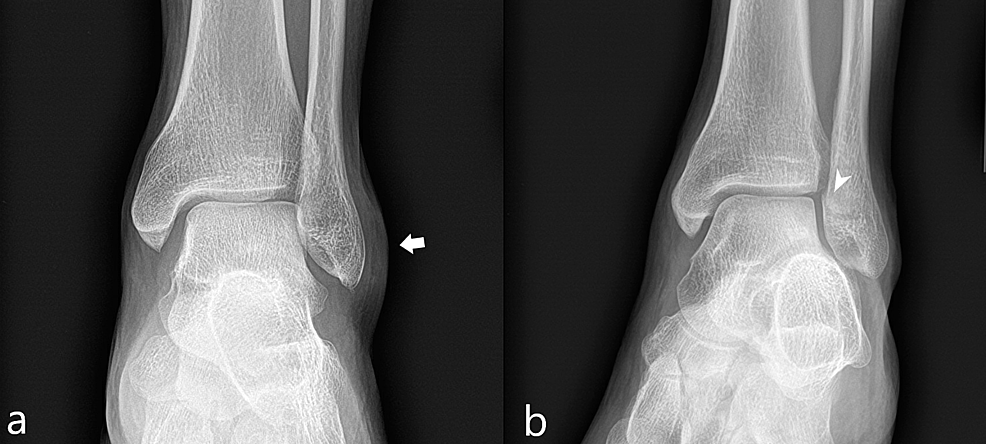

The incision is then sutured closed and the operated ankle is immobilized with a splint or cast. With surgical treatment, the fractured bone is accessed by making an incision over the ankle area and then specially designed plates are screwed onto the bone, to realign and stabilize the fractured parts. In non-surgical treatment, the ankle bone is realigned and special splints or a plaster cast is placed around the joint, for at least 2-3 weeks. Treatment starts with non-surgical methods, and in cases where the fracture is unstable and cannot be realigned, surgical methods are employed. The treatment of ankle fracture depends upon the type and the stability of the fractured bone. Immediately following an ankle injury and prior to seeing a doctor, you should apply ice packs and keep the foot elevated to minimize pain and swelling. In complex cases, where detail evaluation of the ligaments is required an MRI scan is recommended. This test is employed to check the stability of the fracture to decide if surgery is necessary or not. In some cases, pressure is applied on the ankle and then special X-rays are taken. Usually it is very difficult to differentiate a broken ankle from other conditions such as a sprain, dislocation, or tendon injury without having an X-ray of the injured ankle. The diagnosis of the ankle injury starts with a physical examination, followed by X-rays and CT scan of the injured area for a detailed view. Syndesmotic injury, also called a high ankle sprain, is usually not a fracture, but can be treated as a fracture.Trimalleolar fractures in which all three lateral, medial, and posterior bones are fractured.Bimalleolar fractures in which both lateral and medial malleolus bones are fractured.Posterior Malleolus fracture in which the posterior malleolus, the bony hump of the tibia, is fractured.Medial Malleolus fracture in which the medial malleolus, the inner part of the ankle, is fractured.Lateral Malleolus fracture in which the lateral malleolus, the outer part of the ankle is fractured.The different types of ankle fractures are: Types of fracturesĪnkle fractures are classified according to the location and type of ankle bone involved. In cases of severe fracture, deformity around the ankle joint is clearly visible where bone may protrude through the skin. In some cases blood may accumulate around the joint, a condition called hemarthrosis. With an ankle fracture, there is immediate swelling and pain around the ankle as well as impaired mobility. CausesĪnkle fractures occur from excessive rolling and twisting of the ankle, usually occurring from an accident or activities such as jumping or falling causing sudden stress to the joint. The ankle joint is stabilized by different ligaments and other soft tissues, which may also be injured during an ankle fracture. Ankle fracture is a painful condition where there is a break in one or more bones forming the ankle joint. Pain after ankle injuries can either be from a torn ligament and is called ankle sprain or from a broken bone which is called ankle fracture. The joint is protected by a fibrous membrane called a joint capsule, and filled with synovial fluid to enable smooth movement.Īnkle injuries are very common in athletes and in people performing physical work, often resulting in severe pain and impaired mobility. The ends of the fibula and tibia (lower leg bones) form the inner and outer malleolus, which are the bony protrusions of the ankle joint that you can feel and see on either side of the ankle. The ankle joint is composed of three bones: the tibia, fibula, and talus which are articulated together.


 0 kommentar(er)
0 kommentar(er)
